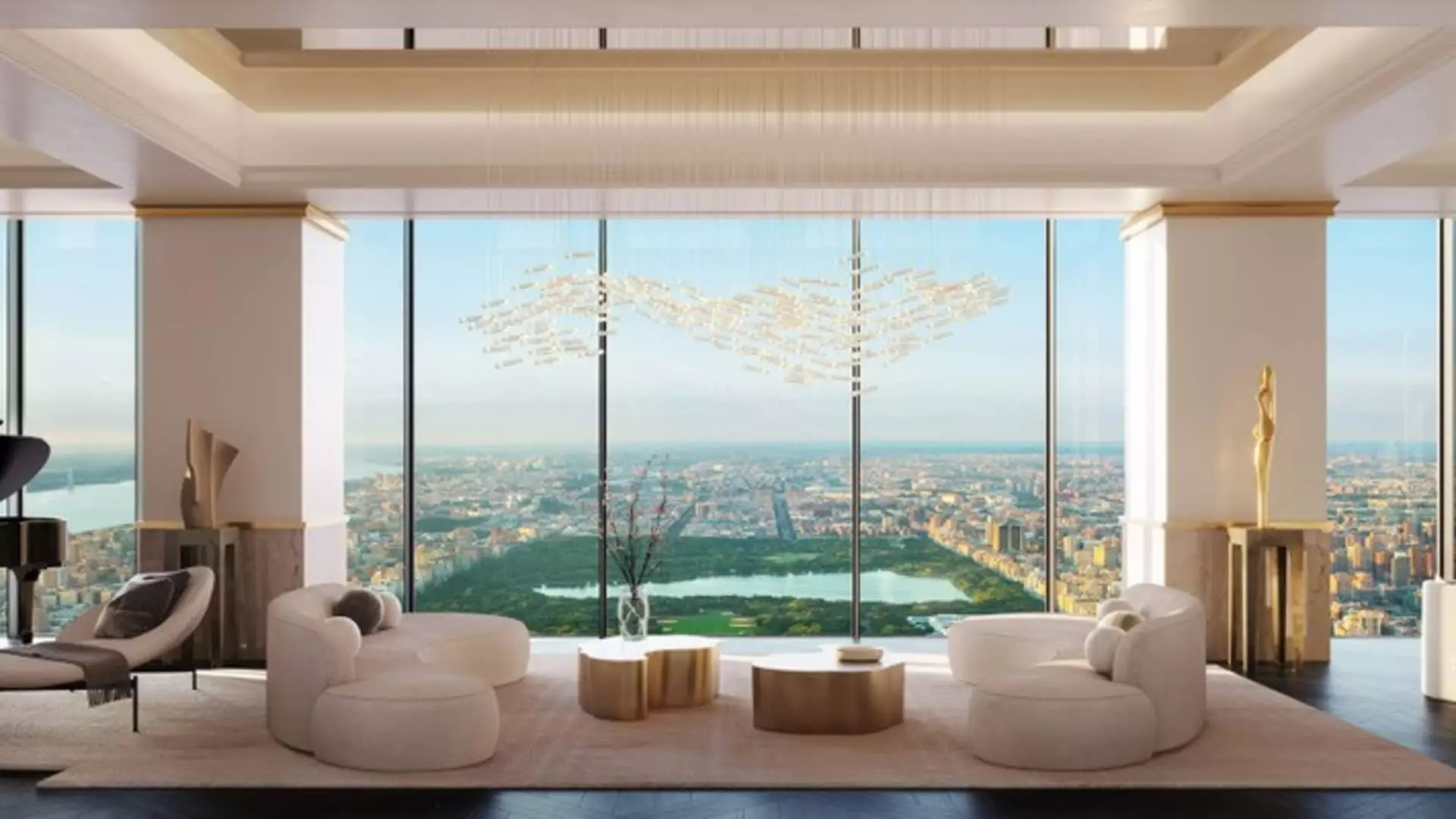Amidst the chaos of fluctuating stock markets and grim headlines about tariffs, another narrative is unfolding, one that’s decidedly more opulent and exclusive. The newly listed $110 million penthouse situated at the summit of Steinway Tower in Manhattan poses a dramatic juxtaposition to the turbulence of Wall Street, which recently experienced unprecedented declines. While the Dow Jones Industrial Average plummeted by thousands of points in just a couple of days, there exists a pocket of buyers in the ultra-luxury market seemingly immune to such fluctuations. This stark contrast raises profound questions about the resilience of wealth in chaotic times and the implications for our economic landscape.
Nikki Field, a broker with Sotheby’s International Realty, affirmed that her affluent clientele is more interested in curating their portfolios than worrying about market fluctuations. This glimmering oasis of high finance is a stark reminder of the increasing wealth disparity, a scenario where the richest continue to thrive while the market bottom is pummeling many others. Field’s assertion highlights an unsettling trend: the very wealthy are scaling their investments into property as financial markets become vexing, viewing real estate as a “core asset class,” which could potentially serve as a buffer against economic uncertainty.
The Quadplex Dream: Architectural Prospects in a Shaky Economy
The luxury listing, combining two separate penthouses into an 11,480-square-foot quadplex, not only offers incredible space but also symbolizes a heightening desire for exclusive living. Behind the gleaming facade of Steinway Tower lies a strategy aimed at maximizing architectural potential in an increasingly unpredictable market.
Field articulates a broader sentiment: while the threat of tariffs and fluctuating economic conditions loom large, the allure of spacious, luxury living in a prime location keeps interested parties buzzing with intent. Buyers are being drawn to opportunities that offer them exclusive access and privacy, emphasizing a psychological shift in how the wealthy perceive investments. In a landscape increasingly defined by uncertainty, the chance to own something rare and distinctive becomes magnified.
However, Jonathan Miller, a well-regarded real estate appraiser, suggests caution is warranted; after all, these nine-figure listings might be more of an anomaly than an industry standard. While million-dollar transactions are mounting, there remains a critical need to appreciate them within the broader context of a fluctuating luxury market where high-stakes buying can act as a double-edged sword.
Shifting Dynamics and Emerging Trends
The broader luxury market, however, displays contrasting signals of hesitance and resilience. Recent reports indicate that many luxury buyers are reconsidering their purchasing intentions in light of recent economic conditions. A palpable anxiety is manifesting in the elite echelons of the market, particularly amidst concerns about inflation and global tensions.
Douglas Elliman broker Noble Black articulates a sentiment echoing uncertainty across the board: “No one likes uncertainty… that’s the worst thing for real estate.” In a world where the stock market dominates, the reluctance to invest in property is further compounded by fears surrounding tariffs and their implications for property values. Some buyers view the current climate as a chance to pivot investments from more volatile financial avenues into tangible properties—a phenomenon that encapsulates a larger trend among the wealthiest 10% of Americans.
Despite the perceived jitters, a recent surge in high-end contracts indicates resilience. Noteworthy sales were recorded even amid volatile conditions, hinting at the adaptive nature of the luxury segment. There is a growing divide, however, between anxious buyers and hopeful sellers, navigating an evolving landscape where expectations on pricing and value are no longer aligned.
Strategic Negotiation: The New Norm in High-End Transactions
In the current climate, the nuances of sale negotiations have undergone a transformation. Luxury brokers are reporting a surge in strategic positioning among buyers, favoring cash transactions, transparent terms, and extended inspection windows. This heightened vigilance echoes the underlying sentiment of a market in flux—where sellers are becoming increasingly amenable to offering price reductions, albeit discreetly, to remain competitive.
Aaron Kirman of Christie’s International Real Estate notes that the traditional timelines for sales are stretching, signaling a cautious approach that buyers must now adopt. The luxury market, often insulated from market fluctuations, is now propped through a careful recalibration of buyer-seller dynamics. Sellers who cling to pre-2020 prices find themselves negotiating from a position of weakness, as buyers assess both valuation and suitability in a landscape where property features can spell success or failure.
In high-end segments—where properties command prices of $20 million or more—purchasing decisions hinge less on financial prudence and more on scarcity and uniqueness. Intriguingly, as the affluent navigate through market uncertainty, their priorities manifest in a choice for trophy properties—underscoring an ever-shifting narrative in real estate that aligns with broader socio-economic discussions about wealth distribution and priority investment in times of uncertainty. The real estate market continues to be a reflection of our times, revealing as much about our collective psyche as it does about the economy.

